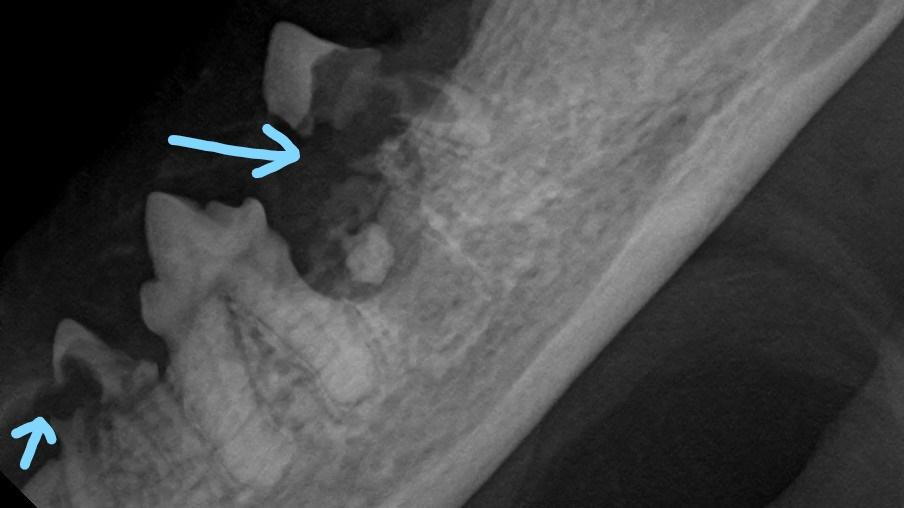Common Dental Problems in Cats

- posted: Feb. 05, 2022
Common Dental Problems in Cats
Cats are obligate carnivores meaning they are built to eat meat. They have 30 teeth designed for killing and tearing apart small prey like mice. Dental disease is common in cats. As many as 50-90% of cats over the age of four have some form of dental disease. The three most common dental problems in cats are resorptive lesions, periodontal disease and gingivitis/stomatitis.
Resorptive lesions look a bit like the cavities that you or I may get, but the process is quite different and they are not caused by diet or poor oral hygiene. The true underlying cause of the loss or reabsorption of the tooth enamel is not known, but speculation is that plaque and inflammation release compounds that bring cells that break down tooth enamel. Once the enamel is gone, the sensitive pulp of the tooth with the nerves is exposed and becomes very painful. The tooth can also become loose and/or the crown of the tooth can break off. The roots of the tooth sometimes dissolve or reabsorb into the surrounding bone.
Pain medications can be used for temporary relief, but there is really no good medical therapy for cats with resorptive lesions. Dental surgery to remove the affected teeth is the only way to correct this problem. The lower premolars are most commonly affected, but resorptive lesions can occur on any tooth and often affects multiple teeth in the mouth.
Periodontal disease occurs when plaque and tartar build up on the teeth along the gumline, trapping bacteria. Over time, bacteria and inflammation damage the ligaments that hold the tooth in place. Loose, infected roots are the result. Not only can this cause pain and bad breath but also the bacteria can enter the bloodstream and cause infection in the heart, kidneys and other organs. Routine dental care and periodic dental cleanings can prevent tooth loss and infection.
Gingivitis and stomatitis can occur when cats have an allergic or autoimmune reaction to plaque and bacteria on the teeth. Gingivitis can be mild to severe. Stomatitis is a severe form of inflammation of the tissues in the mouth including the gums and sometimes the tongue and back of the mouth. Cats often drool, stop eating and may cry out or paw at their mouths. Stomatitis is extremely painful. Sometimes the condition can be controlled with steroids or other immune suppressing drugs and pain medications. Ultimately, some cats need to have all of their teeth extracted to control the inflammation.
Cats instinctually hide pain and illness. If your cat exhibits signs of difficulty eating, drooling, bad breath, red gums and/or your veterinarian notices any suspicious lesions when examining your cat, he or she will need to have a dental cleaning and radiographs of any affected teeth and extraction of any teeth that are loose, infected or have resorptive lesions affecting the enamel.
This blog brought to you by the Patton Veterinary Hospital serving Red Lion, York and the surrounding communities.
https://todaysveterinarypractice.com/external-tooth-resorption-cats/
Location
Patton Veterinary Hospital
425 E Broadway
Red Lion, PA 17356
